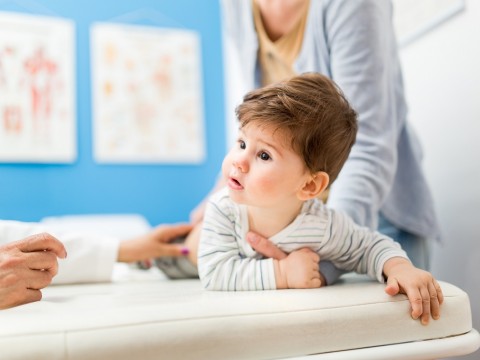
As a new parent, did you have any idea babies were so gassy? I knew I’d be dealing with sleepless nights, lots of dirty diapers and spit-up, but I didn’t know babies commonly pass gas 13-21 times per day!
Why? Well, babies have lots of opportunities throughout the day and night to swallow too much air. Obviously they take in extra air when they cry, and the more colicky your baby is, the more air she will ingest. Other reasons for gas can be attributed to incorrect feeding positions, overfeeding, too much lactose (especially in foremilk), food allergies or food intolerance.
Even if your baby is eating in the perfect position, has no allergies and doesn’t have colic, she can still have gas because her intestines are still forming the micro flora she needs to effectively digest foods. Until her immature digestive system developed, this means one thing - GAS! And this is why all parents become experts in helping their babies pass gas. Just think of it as a job requirement that comes with the esteemed title of “mom” or “dad.”
Passing Gas?
It can be pretty easy to tell when your baby has gas. Is she smiling and happy and then fussy for a few seconds while she passes gas? Does her face turn red? As long as she’s passing gas comfortably, it’s probably not bothering her very much. On the flip side, there are lots of involuntary responses you can recognize if your baby is having painful gas and needs help.
Painful Gas?
If your baby turns red and cries, pulls her legs up to her tummy, stretches her body out and arches her back or clenches her fists, these are all signs of gas discomfort. You can also tell by feeling your baby’s tummy to see if it’s bloated or hard.
If your baby seems to be having a bout with painful gas, here are 5 tricks that should help her feel better:
The Bicycle (Think 80s Aerobics!)
No, your baby doesn’t need legwarmers and a coordinating leotard to do this exercise. And neither do you! While your baby is lying on her back, start moving her legs back and forth, imitating bicycle riding. This exercise helps with intestinal motion and can expel trapped gas. You can also do the same leg-pumping motions while she is on her tummy.
“I Love You” Tummy Rub
You may have heard about the “I love you” massage, which some nurses teach new moms before they leave the hospital. Lie your baby down on her back, then start rubbing her tummy in a circular motion and mimic writing the letters “I,” “L” and “U” with two or three fingers across her belly. By “spelling” the words across your baby’s tummy in a smooth motion, you are essentially triggering activity in the abdomen that can speed up the process for baby to pass trapped gas bubbles.
Burp. Burp. Burp.
The cure-all for practically every fussy baby moment can be a good burp. Sometimes just one will do the trick. Burping relieves gas pains quickly, so try burping her. If it doesn’t happen right away, lay her down for a few minutes and then gently pick her up and try again. Here are some great tips on burping
Little Remedies to the Rescue
Gas pain can be triggered by things like colic, so products like Little Remedies Gripe Water or Little Remedies Gas Relief Drops are quick and easy solutions. Gripe Water, a mixture of water and various herbs, is considered to be an effective homeopathic remedy for quickly eliminating baby’s pain and discomfort. Gas Relief Drops can even be mixed with formula or water, so they offer a quick solution for gassy babies.
Feed Her Before She’s Too Hungry
If you are tracking your baby’s feeding times, try to stick to a schedule and feed her before you start hearing her hungry cries. That way she will be more likely to eat at a leisurely pace and not gulp down her breast milk or formula too quickly. If you’re breastfeeding and your milk lets down quickly, you may need to unlatch baby for a moment and then re-latch her so she can manage your milk flow.
Tummy woes can make for a fussy baby. Find out what you can do about hiccups, gas bubbles and colic to ease the symptoms here.









